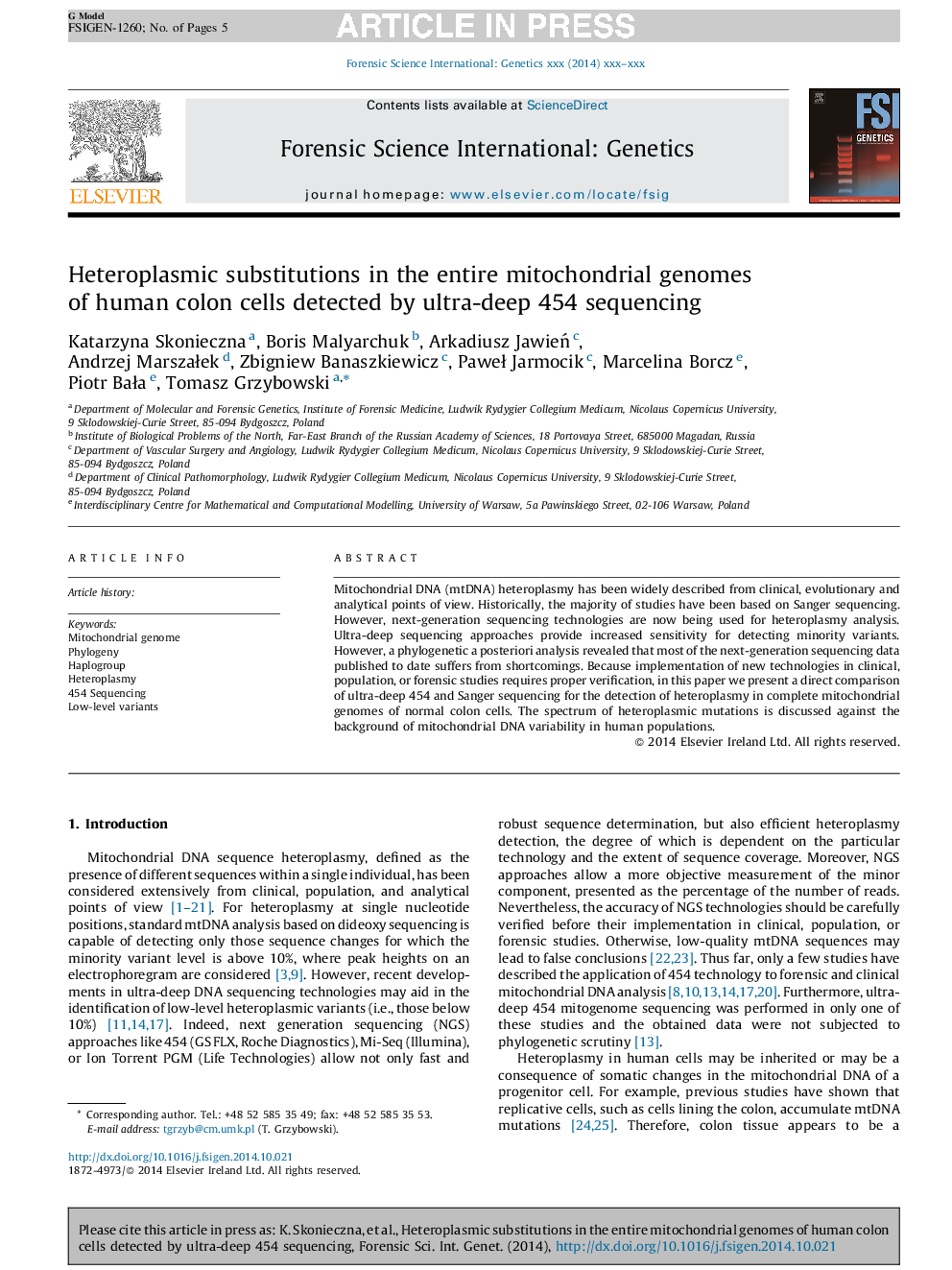| Article ID | Journal | Published Year | Pages | File Type |
|---|---|---|---|---|
| 6553832 | Forensic Science International: Genetics | 2015 | 5 Pages |
Abstract
Mitochondrial DNA (mtDNA) heteroplasmy has been widely described from clinical, evolutionary and analytical points of view. Historically, the majority of studies have been based on Sanger sequencing. However, next-generation sequencing technologies are now being used for heteroplasmy analysis. Ultra-deep sequencing approaches provide increased sensitivity for detecting minority variants. However, a phylogenetic a posteriori analysis revealed that most of the next-generation sequencing data published to date suffers from shortcomings. Because implementation of new technologies in clinical, population, or forensic studies requires proper verification, in this paper we present a direct comparison of ultra-deep 454 and Sanger sequencing for the detection of heteroplasmy in complete mitochondrial genomes of normal colon cells. The spectrum of heteroplasmic mutations is discussed against the background of mitochondrial DNA variability in human populations.
Related Topics
Life Sciences
Biochemistry, Genetics and Molecular Biology
Genetics
Authors
Katarzyna Skonieczna, Boris Malyarchuk, Arkadiusz JawieÅ, Andrzej MarszaÅek, Zbigniew Banaszkiewicz, PaweÅ Jarmocik, Marcelina Borcz, Piotr BaÅa, Tomasz Grzybowski,
